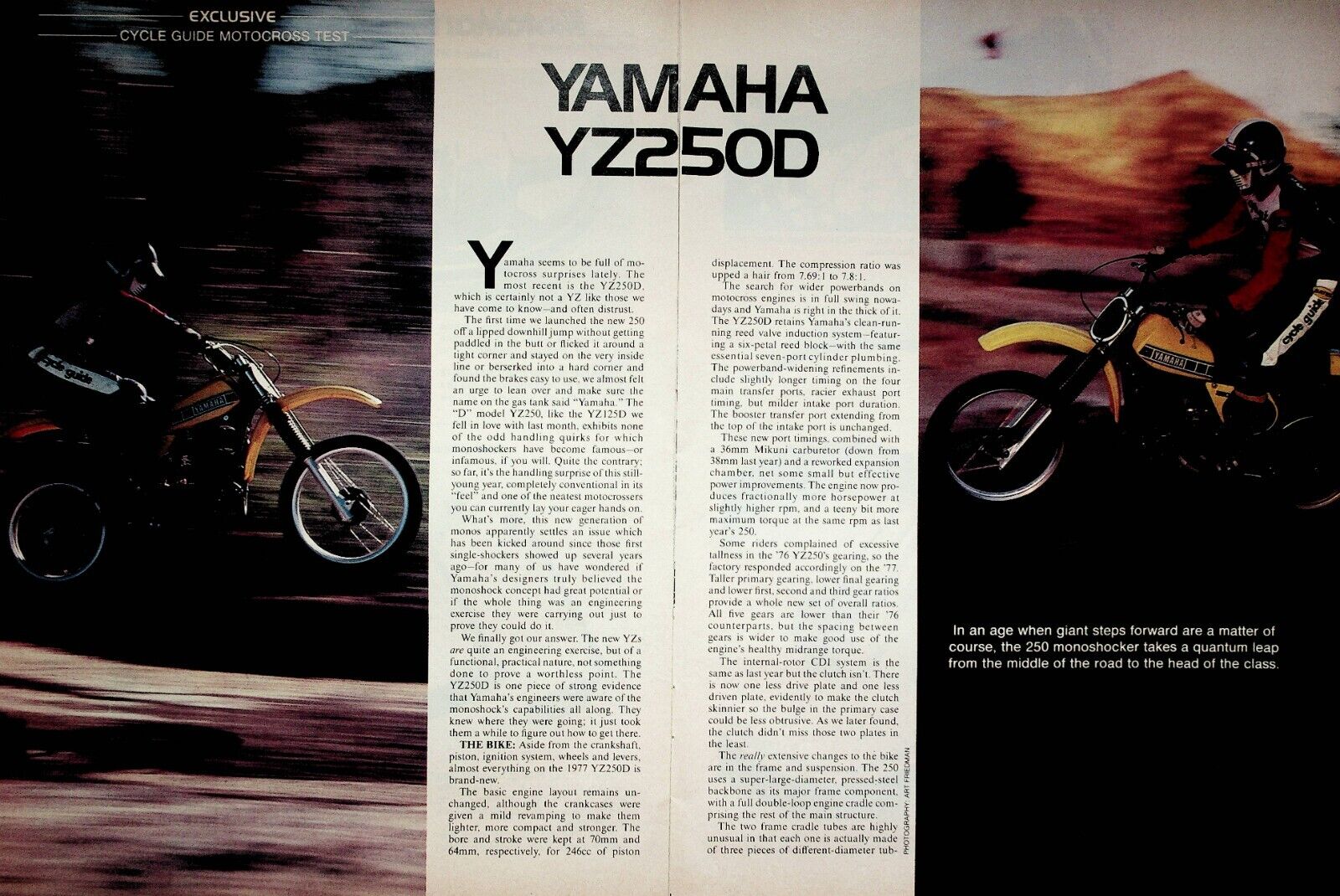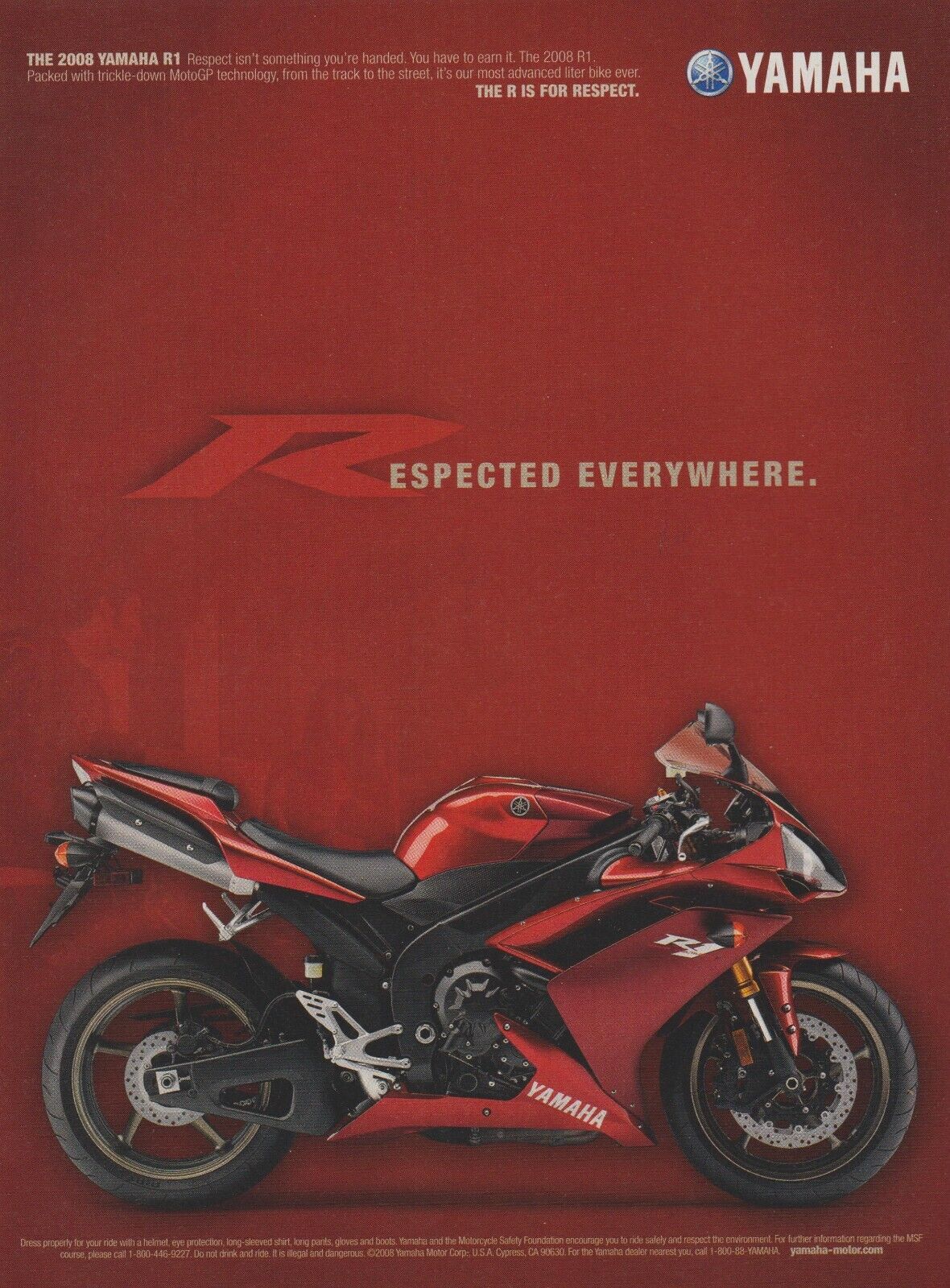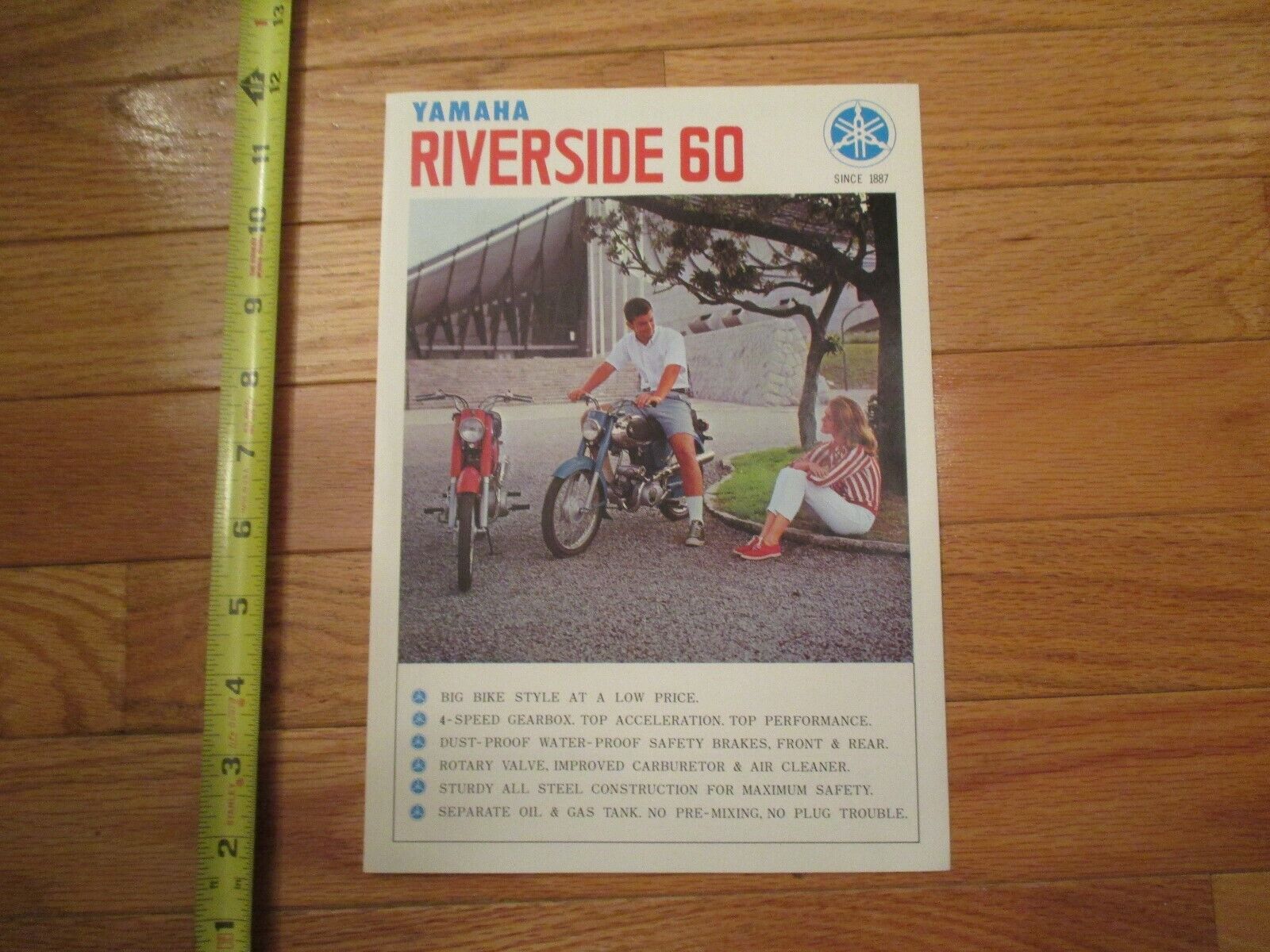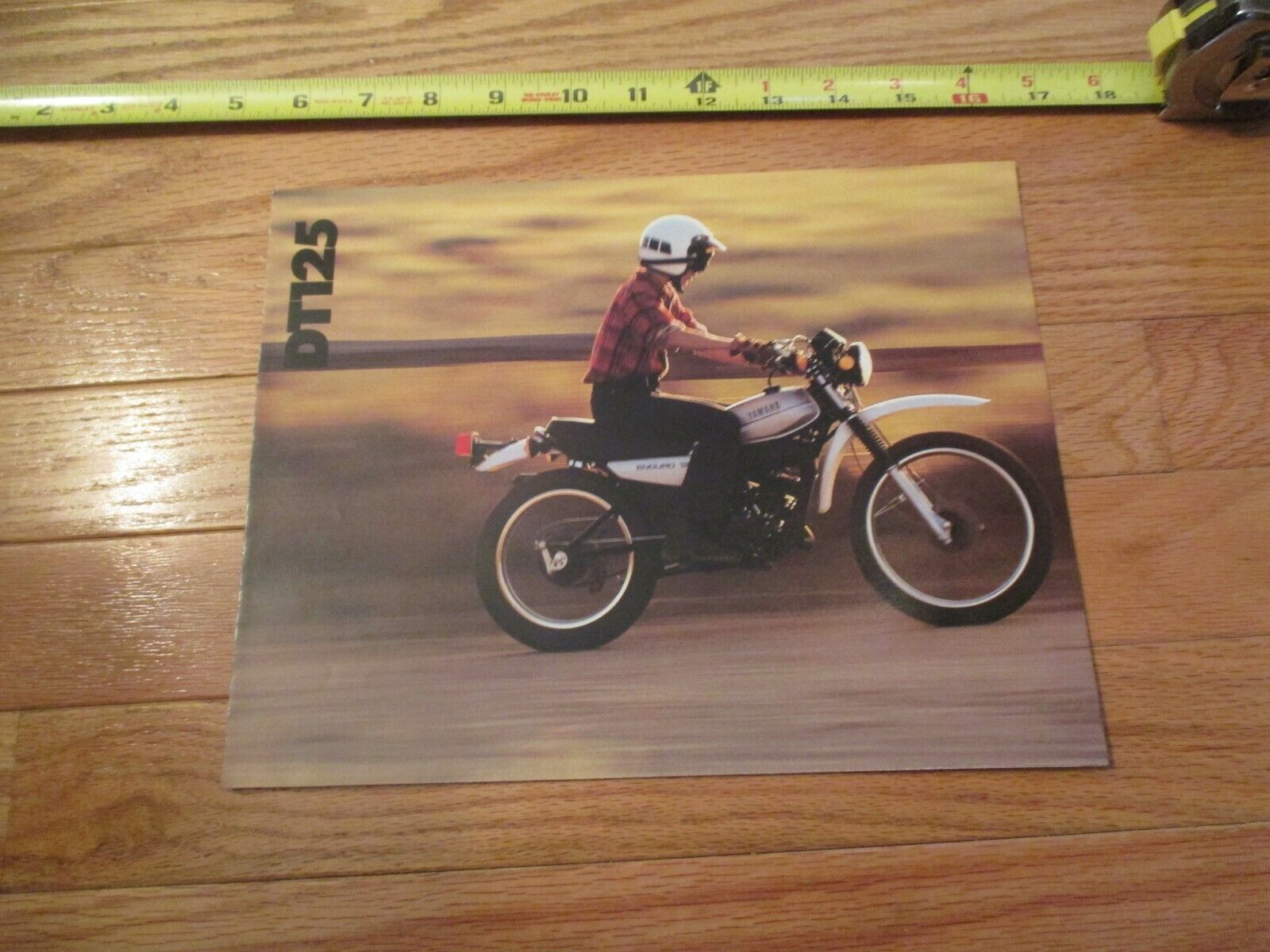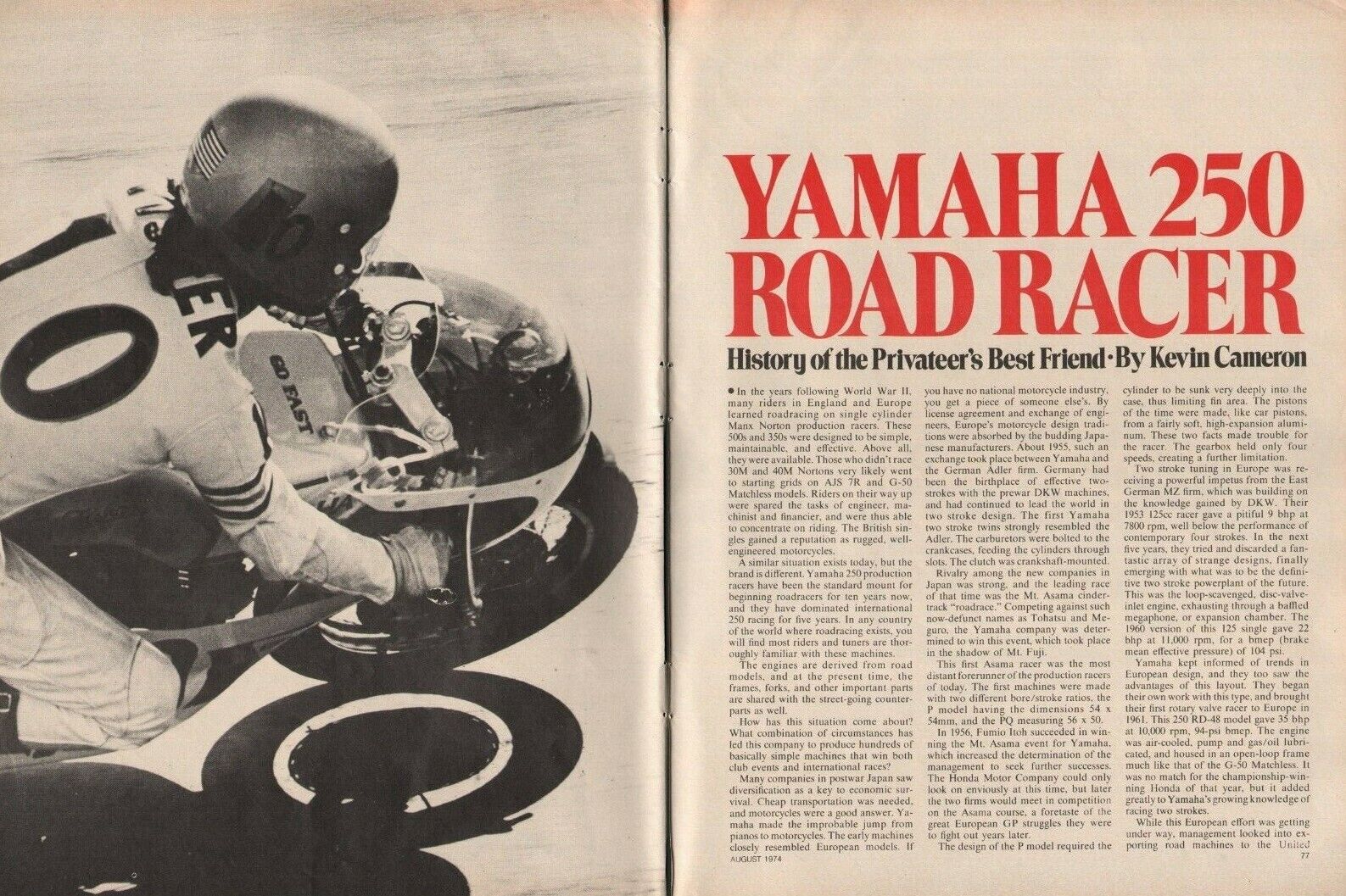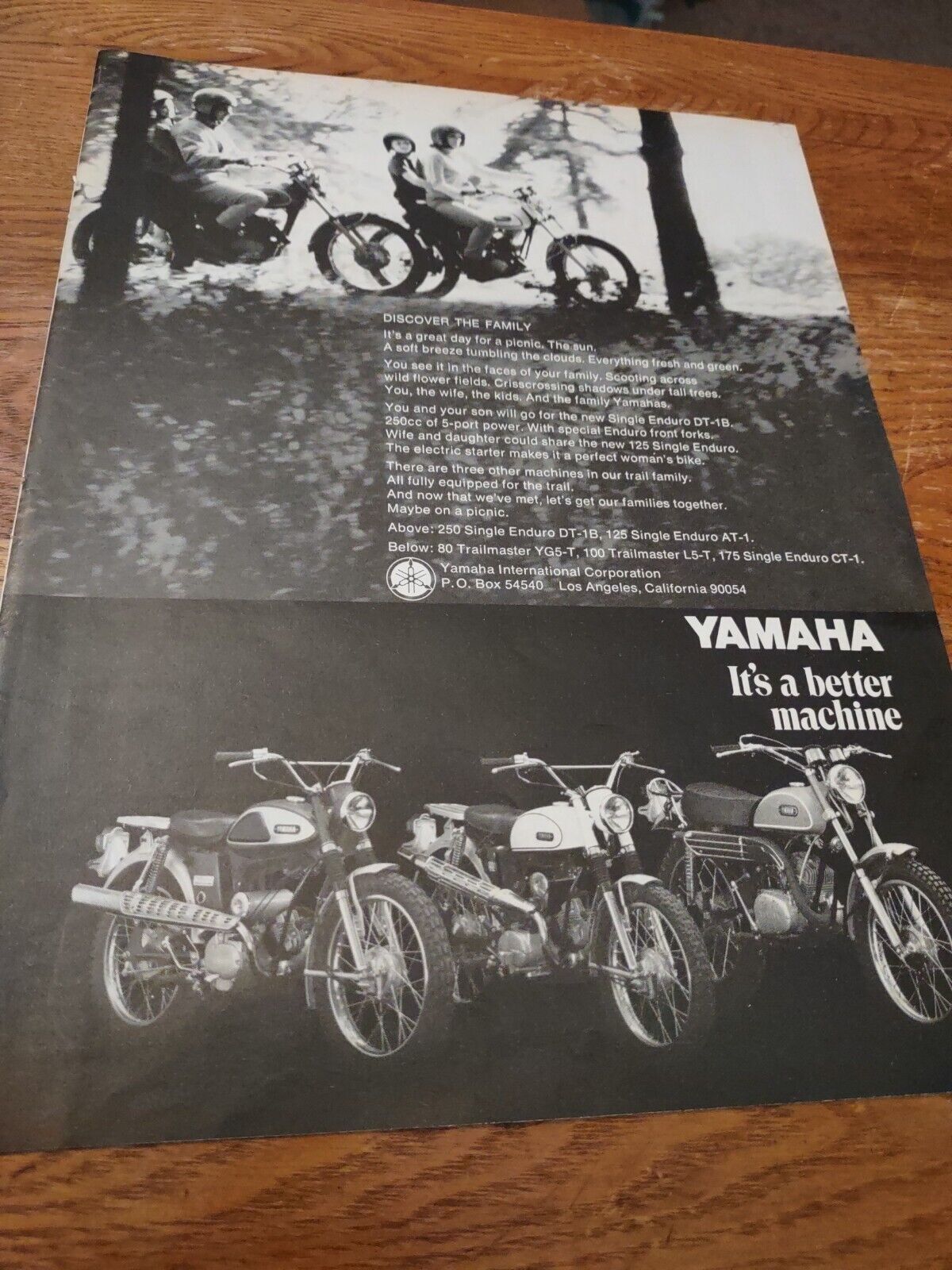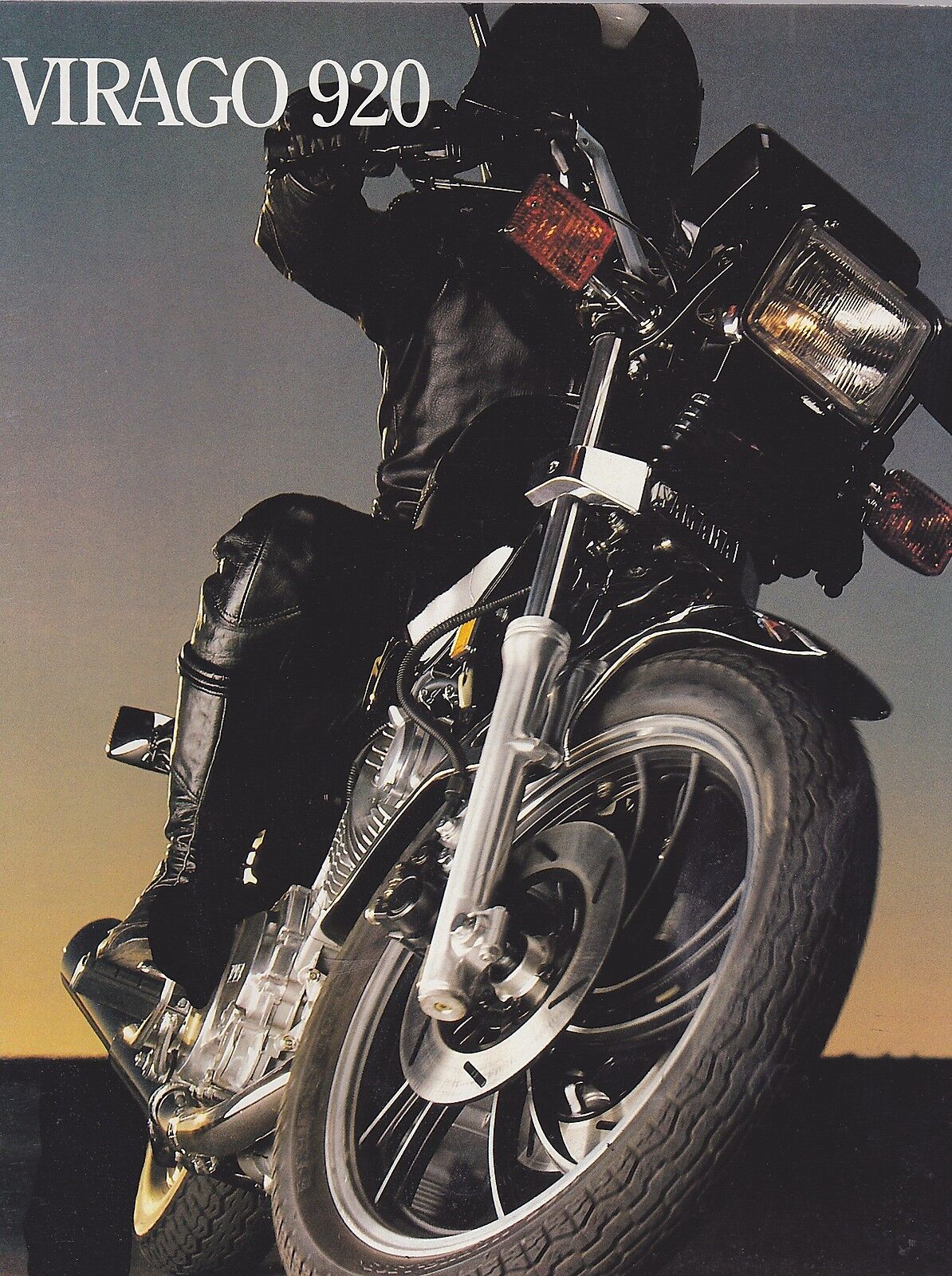-40%
1977 Yamaha YZ250D Motocross Test - 11-Page Vintage Motorcycle Article
$ 7.6
- Description
- Size Guide
Description
1977 Yamaha YZ250D Motocross Test - 11-Page Vintage Motorcycle ArticleOriginal, vintage motorcycle article
Page Size: Approx. 8" x 11" (21 cm x 28 cm) each page
Condition: Good
Yamaha
YZ25OD
Yamaha seems to be full of mo-
tocross surprises lately. The
most recent is the YZ25OD,
which is certainly not a YZ like those we
have come to know—and often distrust.
The first time we launched the new 250
off a lipped downhill jump without getting
paddled in the butt or flicked it around a
tight corner and stayed on the very inside
line or berserked into a hard corner and
found the brakes easy to use. we almost felt
an urge to lean over and make sure the
name on the gas tank said “Yamaha.” The
“D” model YZ250, like the YZ125D we
fell in love with last month, exhibits none
of the odd handling quirks for which
monoshockers have become famous—or
infamous, if you will. Quite the contrary;
so far, it’s the handling surprise of this still-
young year, completely conventional in its
“feel" and one of the neatest motocrossers
you can currently lay your eager hands on.
What's more, this new generation of
monos apparently settles an issue which
has been kicked around since those first
single-shockers showed up several years
ago—for many of us have wondered if
Yamaha’s designers truly believed the
monoshock concept had great potential or
if the whole thing was an engineering
exercise they were carrying out just to
prove they could do it.
We finally got our answer. The new YZs
are quite an engineering exercise, but of a
functional, practical nature, not something
done to prove a worthless point. The
YZ250D is one piece of strong evidence
that Yamaha’s engineers were aware of the
monoshock’s capabilities all along. They
knew where they were going; it just took
them a while to figure out how to gel there.
THE BIKE: Aside from the crankshaft,
piston, ignition system, wheels and levers,
almost everything on the 1977 YZ250D is
brand-new.
The basic engine layout remains un-
changed, although the crankcases were
given a mild revamping to make them
lighter, more compact and stronger. The
bore and stroke were kept at 70mm and
64mm, respectively, for 246cc of piston
displacement. The compression ratio was
upped a hair from 7.69:1 to 7.8:1.
The search for wider powerbands on
motocross engines is in full swing nowa-
days and Yamaha is right in the thick of it.
The YZ250D retains Yamaha’s clean-run-
ning reed valve induction system-featur-
ing a six-petal reed block—with the same
essential seven-port cylinder plumbing.
The powerband-widening refinements in-
clude slightly longer timing on the four
main transfer ports, racier exhaust port
liming, but milder intake port duration.
The booster transfer port extending from
the top of the intake port is unchanged.
These new port limings, combined with
a 36mm Mikuni carburetor (down from
38mm last year) and a reworked expansion
chamber, net some small but effective
power improvements. The engine now pro-
duces fractionally more horsepower at
slightly higher rpm. and a teeny bit more
maximum torque at the same rpm as last
year’s 250.
Some riders complained of excessive
tallness in the ’76 YZ250’s gearing, so the
factor)' responded accordingly on the ’77.
Taller primary gearing, lower final gearing
and lower first, second and third gear ratios
provide a whole new set of overall ratios.
All five gears are lower than their '76
counterparts, but the spacing between
gears is wider to make good use of the
engine’s healthy midrange torque.
The internal-rotor CDI system is the
same as last year but the clutch isn’t. There
is now one less drive plate and one less
driven plate, evidently to make the clutch
skinnier so the bulge in the primary case
could be less obtrusive. As we later found,
the clutch didn’t miss those two plates in
the least.
The really extensive changes to the bike |
are in the frame and suspension. The 250 2
uses a super-large-diameter. pressed?steel £
backbone as its major frame component. §
with a full double-loop engine cradle com- >
prising the rest of the main structure. J
The two frame cradle lubes are highly 5
unusual in that each one is actually made £
of three pieces of different-diameter tub- J
In an age when giant steps forward are a matter of
course, the 250 monoshocker takes a quantum leap
from the middle of the road to the head of the class...
15997
